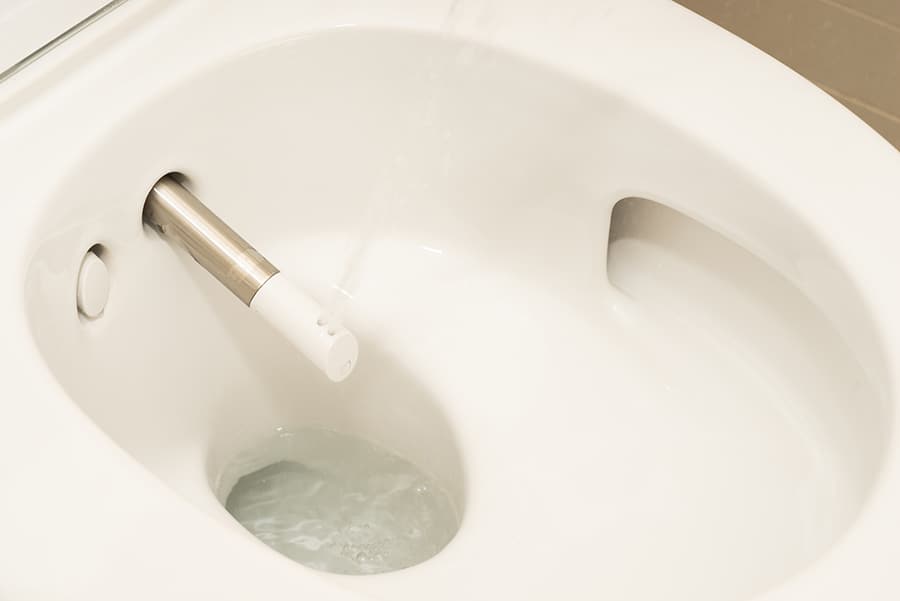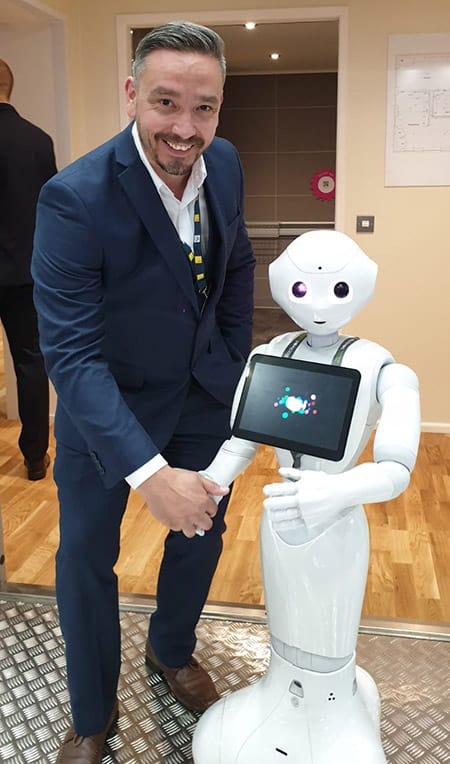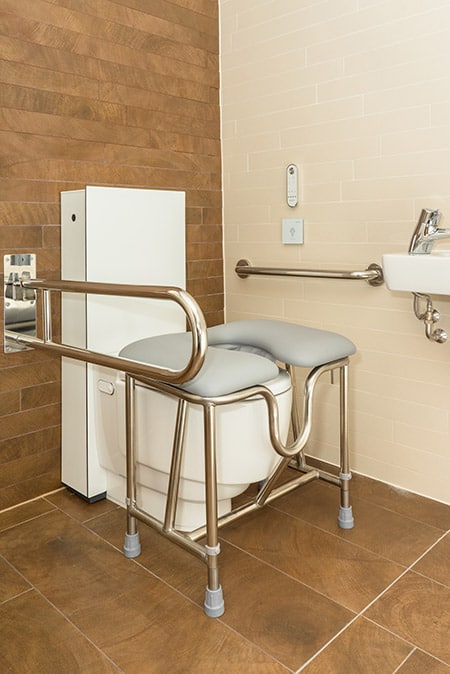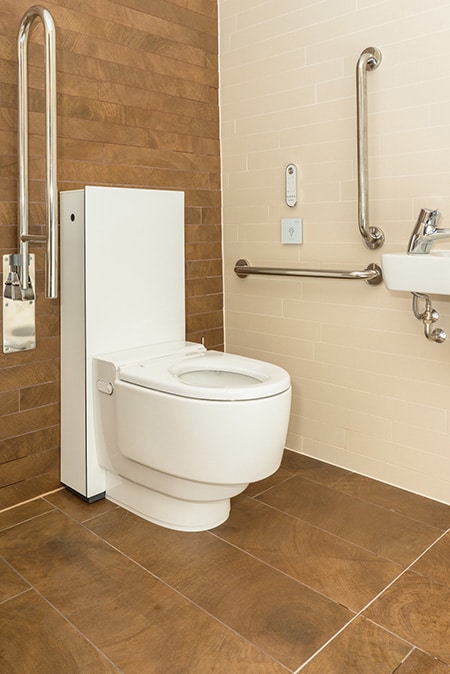Comment: Why the bathroom is key to maintaining independence in the home

 According to the Department for Communities and Local Government, almost two million households in England have one or more people with a long-term limiting illness or disability that requires adaptations to their home. However, evidence from a range of organisations, such as the Centre for Ageing Better, shows significant and multiple barriers to installation are still preventing the necessary adaptations in many cases.
According to the Department for Communities and Local Government, almost two million households in England have one or more people with a long-term limiting illness or disability that requires adaptations to their home. However, evidence from a range of organisations, such as the Centre for Ageing Better, shows significant and multiple barriers to installation are still preventing the necessary adaptations in many cases.
In this article, Simon Thomas, National Sales Manager of AquaClean Care for Geberit, explores the role of the bathroom in maintaining independence and how the continued development of new solutions is facilitating greater opportunities.
Home adaptations are on the rise as more elderly people and those with long-term health conditions or mobility issues are choosing to improve the accessibility and usability of their home environment, rather than moving to supported or specialist housing.
Research shows that 32 percent of people under 55 with a long-term limiting illness or disability believe their home is not fit for purpose and 23 percent of over 55s have already had adaptations made to their home. A further 23 percent expect to have to carry out adaptations at some stage.
In total, the Equality and Human Rights Commission predicts nine percent of all households in England need adaptations to support the needs of one or more people living there with long term limiting illness or disability. However, as any occupational therapist or local authority case worker will know, it is not always straightforward. Only 55 percent of these have had the necessary adaptations made.
Identifying the barriers
 It is clear that there are a number of challenges to adaptations, not least the complexity and inconsistency of funding, particularly in different geographic areas. Funding has increased sharply in recent years, however, and the number of grants awarded is on the rise as a result.
It is clear that there are a number of challenges to adaptations, not least the complexity and inconsistency of funding, particularly in different geographic areas. Funding has increased sharply in recent years, however, and the number of grants awarded is on the rise as a result.
Product design is another perceived barrier, as there remains a belief amongst some people that changes to their home will make the property less attractive, or make the bathroom in particular look too ‘institutional’. In this era of forward-thinking and sensitive product design, people want support in their home without impacting on the visual appeal of their property – but there is no reason why that can’t be achieved with the latest product innovations.
Another challenge is the provision of information to users. Although local authorities are required under the Care Act 2014 to provide good quality information and advice about home adaptations and repairs, evidence from the Centre for Ageing Better shows that current provision often falls short of guidance. Local authorities should be explaining the process for assessments, funding and how to access suitable local tradespeople to get the work done, but a lack of consistency is impacting support in many areas.
Finally, it is clear that adaptations and repairs work best when users are fully involved in the process. It remains important to ensure personalisation so that users are fully involved in the assessment, specification and installation of the necessary adaptations. There is no one-size-fits-all approach to home adaptations.
In the bathroom
Of all rooms in a property, the bathroom is the room in which the biggest difference can be made to support independence in the home and where the highest proportion of adaptations are needed.
 One quarter of men and 31 percent of women above 65 struggles with one or more Activity of Daily Living (ADL) such as washing, dressing, eating and going to the toilet. This is around 3.3 million people in total. For many people, the bathroom offers a sanctuary; a chance to unwind from the pressures and chaos of everyday life. For many others with a long-term limiting illness or disability, the bathroom is so much more than that. It is the key to maintaining their home.
One quarter of men and 31 percent of women above 65 struggles with one or more Activity of Daily Living (ADL) such as washing, dressing, eating and going to the toilet. This is around 3.3 million people in total. For many people, the bathroom offers a sanctuary; a chance to unwind from the pressures and chaos of everyday life. For many others with a long-term limiting illness or disability, the bathroom is so much more than that. It is the key to maintaining their home.
With innovative solutions from manufacturers and a greater focus on funding, there has never been a better opportunity to provide people who wish to remain living independently with enhanced opportunities to do so. Even more than that, the latest products also mean users do not need to compromise on style or functionality.
Thanks to continued innovation from manufacturers, working in partnership with key stakeholders including local authorities, occupational therapists and users, there is now a greater choice of bathroom adaptations than ever before, from walk in showers to bath lift belts.
Shower toilers, for example, like the new Geberit AquaClean Care, are seen as a last resort and only considered after exhausting other measures such as ‘bottom wiping’ toilets, a care package and assistance from loved ones. With earlier consideration in the individual’s assessment, shower toilets could save costs, prevent loss of dignity and support continued independence in the home.
Even finishing touches like flush plates and frames can be important, as the elements of a bathroom that people touch and feel, especially those that they use every day, can make all the difference when delivering a ‘non-institutional’ domestic bathroom.
Enhanced opportunities
Crucially, with today’s solutions increased funding and a greater desire from users to stay in their home, there is genuine opportunity to overcome the perceived barriers. As Geberit’s new guide for occupational therapists, local authorities and carers suggests, that leaves education and collaboration as the key to supporting independence in the home.
Download ‘The role of the bathroom in maintaining home independence’ form Geberit for free here
https://thiis.co.uk/comment-why-the-bathroom-is-key-to-maintaining-independence-in-the-home/https://thiis.co.uk/wp-content/uploads/2019/11/AquaClean-Care-3.jpghttps://thiis.co.uk/wp-content/uploads/2019/11/AquaClean-Care-3-150x150.jpgAnalysis & InsightsOpinions & Commentsaccessible bathroom,accessible toilet,Geberit,Geberit AquaClean Care,home adaptations,housing adaptations,mobility needs,shower toiletAccording to the Department for Communities and Local Government, almost two million households in England have one or more people with a long-term limiting illness or disability that requires adaptations to their home. However, evidence from a range of organisations, such as the Centre for Ageing Better, shows significant...Sarah SarsbySarah Sarsbysarah@thiis.co.ukEditorTHIIS Magazine

